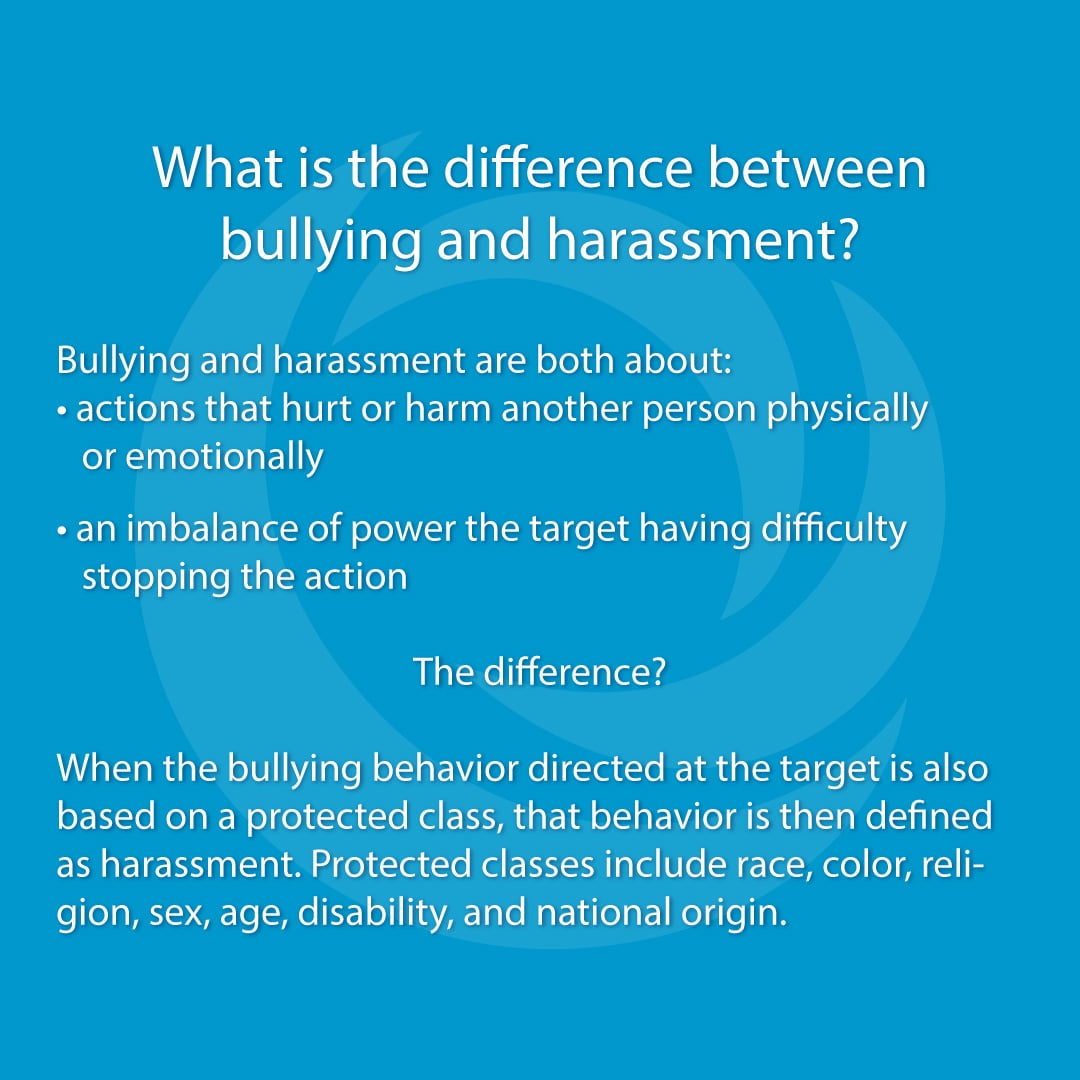What is the Difference Between Bullying and Harassment?

60-second answer
Bullying and harassment are often used interchangeably when talking about hurtful or harmful behavior. They are very similar, but in terms of definition, there is an important difference.
Bullying and harassment are similar as they are both about:
- power and control
- actions that hurt or harm another person physically or emotionally
- an imbalance of power between the target and the individual demonstrating the negative behavior
- the target having difficulty stopping the action directed at them
The distinction between bullying and harassment is that when the bullying behavior directed at the target is also based on a protected class, that behavior is then defined as harassment. Protected classes include:
- race
- color
- religion
- sex
- age
- disability
- national origin
Article
Although bullying and harassment are often used interchangeably when talking about hurtful or harmful behavior — and the behavior may look the same — there are important distinctions in the definition, laws, and protections for students experiencing harassment.
The first difference is in the definitions of bullying and harassment. For bullying, it’s important to note that while definitions vary from source to source, most agree that an act is defined as bullying is when someone aggressively uses their “power” to target another individual with repeated, unwanted words or actions. Those targeted are hurt either physically or emotionally and have a hard time stopping what is happening to them. In this context “power” can be physical, social, or emotional (for example, a higher social status, physically larger, or emotionally intimidating).
The definition of harassment outlines that the behavior is similar by its unwanted and hurtful actions. It can include unwelcome conduct such as verbal abuse, graphic or written statements, threats, physical assault, or other conduct that is threatening or humiliating, but the negative behavior is based on a student’s race, color, religion, sex, age, disability, or national origin. For example, bullying behavior meets the threshold of harassment when a student is being verbally bullied with demeaning language about their disability.
Students experiencing harassment also have protections at the federal level. The Office of Civil Rights (OCR) and the Department of Justice (DOJ) have stated that bullying is considered discriminatory harassment when based on a student’s race, color, religion, sex, age, disability, or national origin. If a student is experiencing discriminatory harassment, federally funded schools are obligated under federal law to address the behavior.
If you’re looking for more information on how schools are required to address the behavior, visit stopbullying.gov.
Posted November, 2016
Your Opinion Matters
We look forward to hearing from you! Please take a moment to respond and view results.
